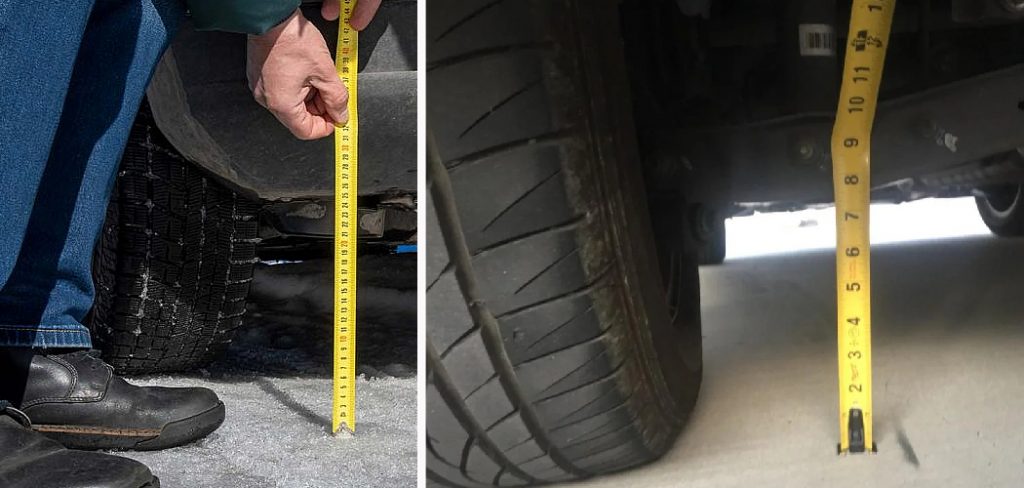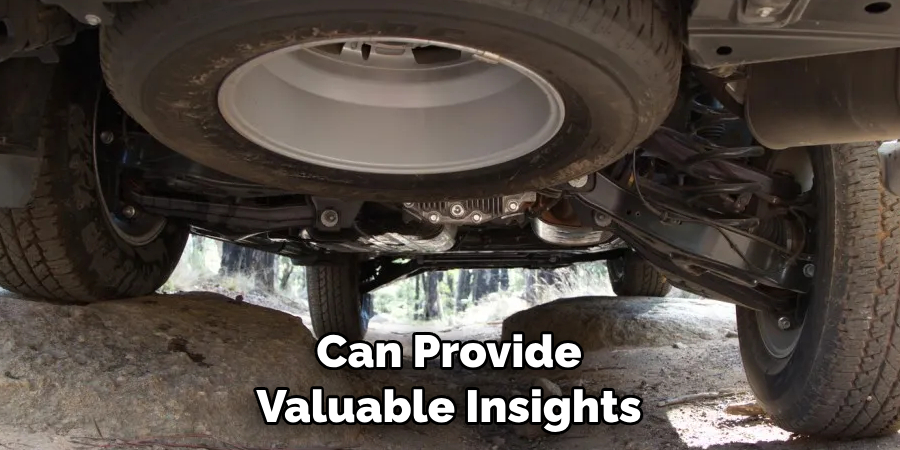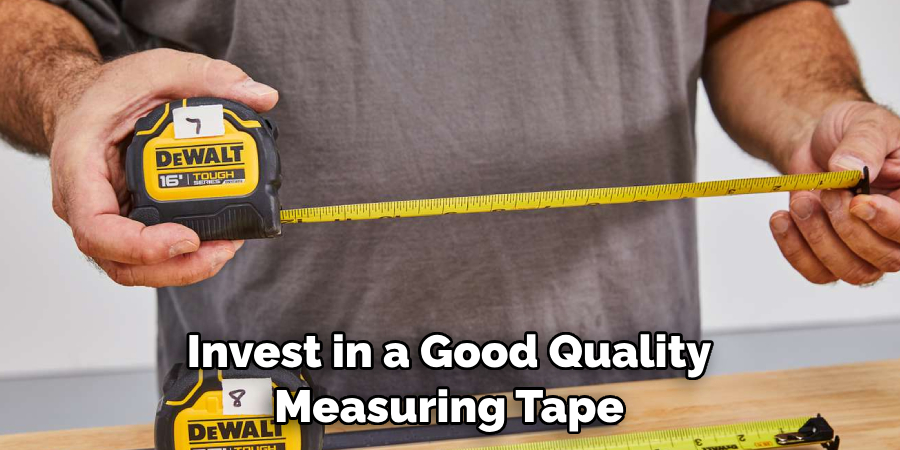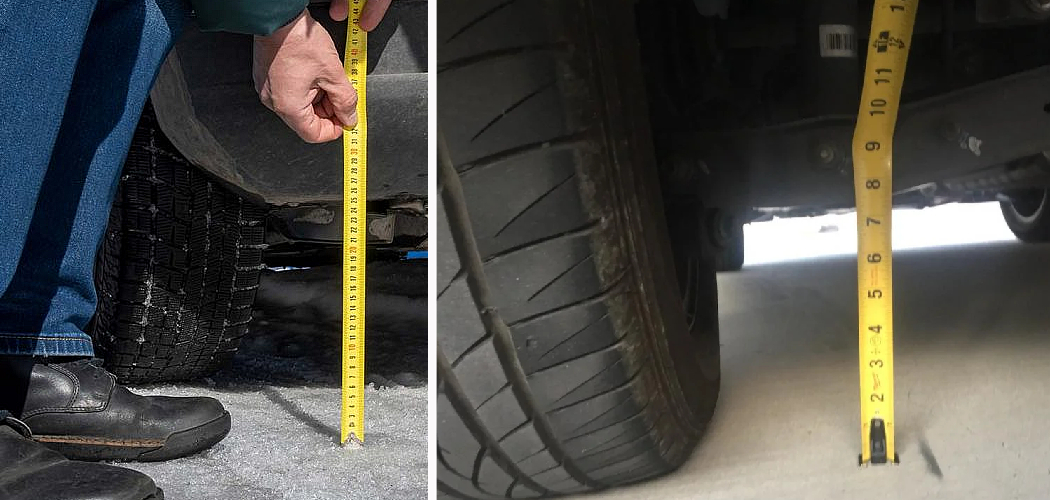Welcome to all the adventure seekers and off-road enthusiasts out there! As we go on thrilling expeditions through challenging terrains, one thing that can make or break our journey is ground clearance. Whether you’re driving a sturdy SUV or a nimble ATV, understanding and measuring your vehicle’s ground clearance is crucial for navigating through rough landscapes.

But how exactly do you measure ground clearance? In this blog post, we will dive into all the details of how to measure ground clearance. So buckle up and get ready to learn how to measure your vehicle’s ground clearance like a pro!
Why May You Want to Measure Ground Clearance?
1 . To Know Your Vehicle’s Capabilities
As mentioned earlier, ground clearance plays a significant role in the performance of your vehicle. Knowing your vehicle’s ground clearance will help you understand its capabilities and limitations while traversing through different terrains. A high ground clearance means better maneuverability over obstacles like rocks, logs, or uneven surfaces, making it an ideal choice for off-road adventures.

2 . To Ensure Proper Maintenance
Ground clearance can vary over time due to factors like wear and tear, tire pressure, or even suspension changes. Measuring your vehicle’s ground clearance regularly will help you keep track of any changes and address them promptly. This ensures that your vehicle is functioning at its best and avoids any potential safety hazards while driving.
3 . To Make Informed Modifications
For all the DIY enthusiasts and gearheads out there, measuring ground clearance can provide valuable insights for making modifications to your vehicle. Whether it’s installing larger tires or altering suspension components, knowing the current ground clearance will help you make informed decisions that won’t compromise your vehicle’s performance.

How to Measure Ground Clearance in 6 Easy Steps
Step 1: Gather the Required Tools
Before you begin, make sure you have the following tools at hand:
- Measuring tape or ruler
- Chalk or masking tape
- Flat surface to park your vehicle on
Step 2: Find a Level Surface to Park Your Vehicle On
To get an accurate measurement, it’s essential to park your vehicle on a flat surface. This could be a parking lot, garage floor, or any other flat area.
Step 3: Prepare Your Vehicle
Ensure that your vehicle is unloaded and has an empty fuel tank. You can also remove any aftermarket modifications like bumpers or skid plates for accurate measurements. Also, you have to make sure that the tires are inflated to the recommended pressure.
Step 4: Measure From Ground to Lowest Point
Using a measuring tape or ruler, measure the distance from the ground to the lowest point of your vehicle. This could be either the front, rear, or side of your vehicle depending on its design. You can also use chalk or masking tape to mark this point for future reference.
Step 5: Measure From Ground to Axle
Next, measure the distance from the ground to your vehicle’s axle. This can be done by measuring from the center of your tire rim to the ground. Also, ensure that your vehicle is positioned parallel to your measuring tape for an accurate reading.

Step 6: Calculate the Ground Clearance
To calculate the ground clearance, subtract the measurement taken in step four from the measurement taken in step five. The result will be your vehicle’s ground clearance. Repeat this process for all four wheels if needed.
Some Extra Tips to Measure Ground Clearance
1 . Do Not Attempt While on Inclined Ground
To ensure accurate measurements, always measure your vehicle’s ground clearance on level ground. Measuring while your vehicle is parked on an inclined surface will result in incorrect readings.
2 . Check Your Vehicle Manual
If you’re unsure about the exact location of the lowest point of your vehicle, consult your vehicle manual. It may provide information about the lowest point and make it easier for you to measure. Also, check if your manual specifies the recommended ground clearance for your vehicle.
3 . Take Precautions
While measuring, be careful not to damage any components of your vehicle. It’s also advisable to wear gloves and safety glasses while working under or around a vehicle. Also, have someone assist you in measuring to ensure accurate readings.
4 . Use Reliable Tools
Invest in a good quality measuring tape or ruler for accurate measurements. You can also use laser distance meters or smartphone apps designed specifically for measuring ground clearance. Also, ensure that your measuring tape or ruler is clean and free from any bends or kinks.
And there you have it, folks! We hope this guide has helped you understand the importance of measuring ground clearance and how to do it correctly. Remember to measure regularly, especially before heading out on any off-road adventures.

Frequently Asked Questions
What Precautions Should I Take While Measuring Ground Clearance?
While measuring, be careful not to damage any components of your vehicle. It’s also advisable to wear gloves and safety glasses while working under or around a vehicle. Also, have someone assist you in measuring to ensure accurate readings.
Is Ground Clearance the Same as Vehicle Height?
No, ground clearance and vehicle height are two different measurements. The ground clearance is measured from the lowest point of your vehicle to the ground, while the vehicle’s height is usually measured from its roof to the ground.
What if My Vehicle Has a Low Ground Clearance?
If your vehicle has a low ground clearance, you may face difficulties while traversing through rough terrains. In such cases, it’s essential to be cautious and avoid any potential obstacles that may damage your vehicle. You can also consider making modifications like installing skid plates or raising the suspension to increase ground clearance. However, consulting a professional mechanic is always recommended before making any modifications. So, keep measuring and stay safe out there!
Can You Measure Ground Clearance on Any Vehicle?
Yes, you can measure ground clearance on any vehicle that has a gap between its lowest point and the ground. However, the method of measurement may vary depending on the vehicle’s design. It’s always best to consult your vehicle manual or seek professional help if needed.
How Much Ground Clearance is Recommended for Off-Roading?
The recommended ground clearance for off-roading varies depending on the type of terrain you’ll be driving on. Generally, a ground clearance of at least 8 inches is considered suitable for most off-roading adventures. However, it’s always best to consult your vehicle manual or seek professional advice before heading out on any off-road trips. So, stay safe and happy off-roading!
Can I Measure Ground Clearance Using a Smartphone App?
Yes, there are many smartphone apps available that can help you measure ground clearance accurately. However, it’s essential to use a reliable and accurate app for the best results. Also, keep in mind that such apps may not work well on uneven or rough surfaces, so it’s always best to double-check your measurements using other methods as well. So, use them wisely and always double-check for accuracy!
Conclusion
In conclusion, ground clearance is an important factor to consider when purchasing a vehicle or planning a challenging off-road adventure. By understanding the various methods of measuring ground clearance, such as approach and departure angles, breakover angles, and ramp travel index, you can make an informed decision on which vehicle will best suit your needs.
Now you know how to measure ground clearance. Remember to take into account the type of terrain you will be driving on and the potential obstacles you may encounter. You can also consider aftermarket modifications, such as lift kits or larger tires, to further improve your vehicle’s ground clearance.

